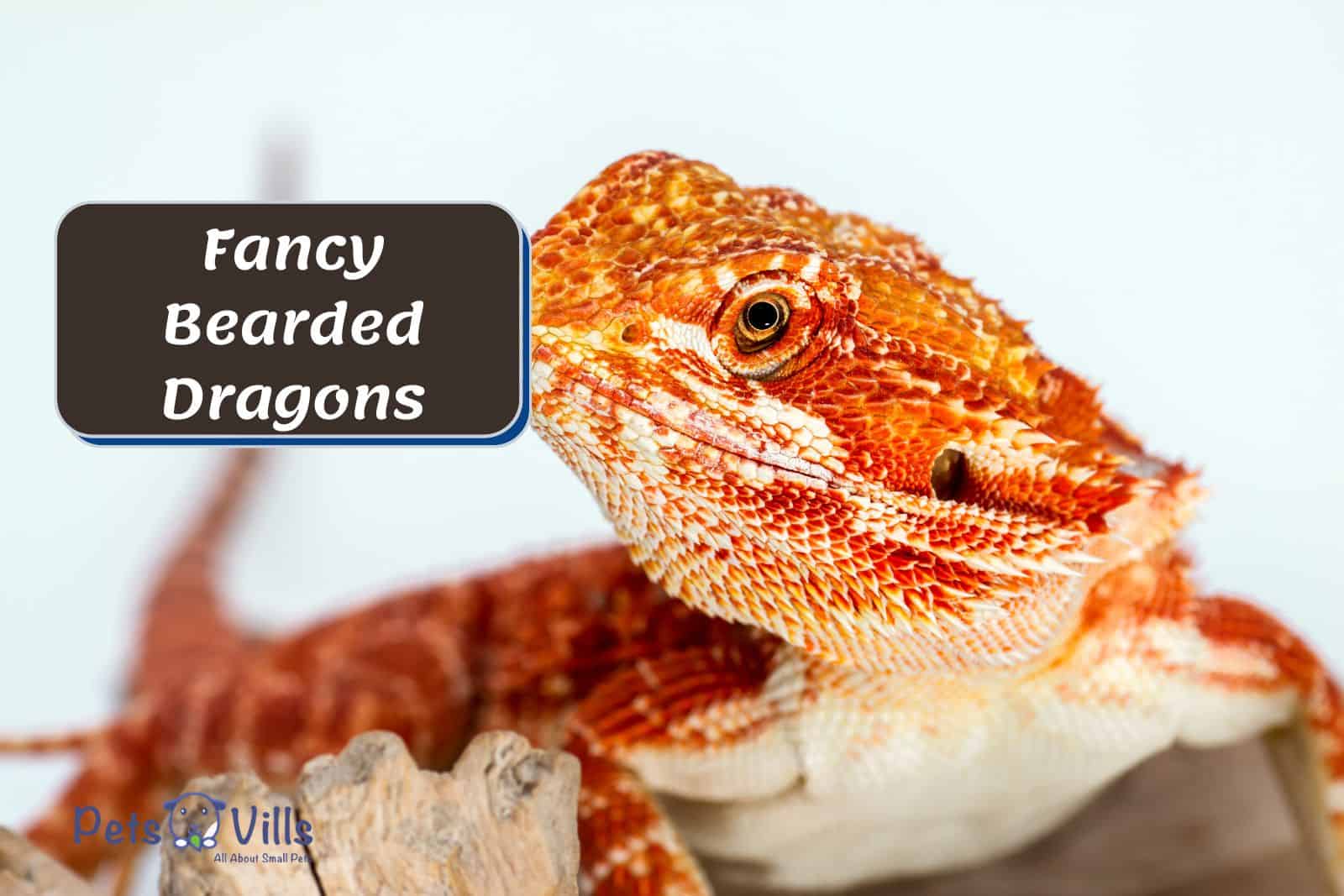Are you curious to learn about fancy bearded dragons and if they’re the right pet for you?
Years ago, when buying my first lizards, I spent a lot of time researching how to recognize fancy beardies and care for them.
And I’m here to share my experience with you and discuss everything you should know about fancy bearded dragons.
Just keep reading.
Table of Contents
Fancy Bearded Dragons: Appearance, History, and Price
Fancy beardies are bearded dragons with color, scales, or patterns that differ from the typical wild-type lizards and whose traits can’t be linked to standard bearded dragon morphs.
Let me explain it.
Normal beardies are tan, brown, or dusty-colored with subtle markings, which allows them to blend and camouflage in their natural environment (the Australian dessert).
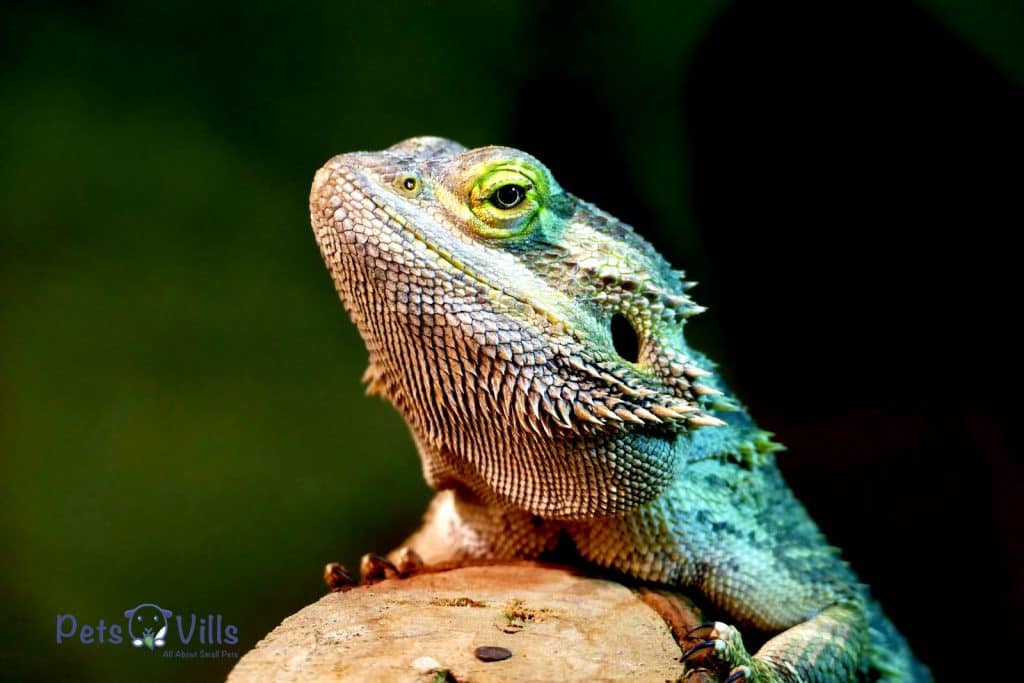
Fancy dragons have brighter colors, noticeable patterns, fewer spikes, or smoother scales. These differences in appearance and skin texture are the result of natural mutations.
Unfortunately, bearded dragons with such traits don’t survive for long in the wild due to predators or inherited health problems.
Imagine trying to blend in and hide from a hungry hawk when your color makes you visible from miles away!
If those unique reptiles have such low survival chances, you’re right to wonder why fancy dragons exist.
CHECK: Everything About the Hypo Bearded Dragon
How Did Fancy Bearded Dragons Appear?
Fancy bearded dragons are bred in captivity through selective breeding, allowing breeders to reproduce specific, vivid colors and traits uncommon or non-existent in the wild.
Think about fancy dragons as purebred cats – breeders keep track of their appearance and lineage to refine the most desirable traits and genetic morphs.
For example, breeders that want to create a ruby-red beardie will breed four common bearded lizards with a bit of red on their bodies, creating two hatches.
They’ll repeat the process with suitable offspring from each hatch. And then they do it multiple times until they have a hatch of pet reptiles with the ruby-red color.
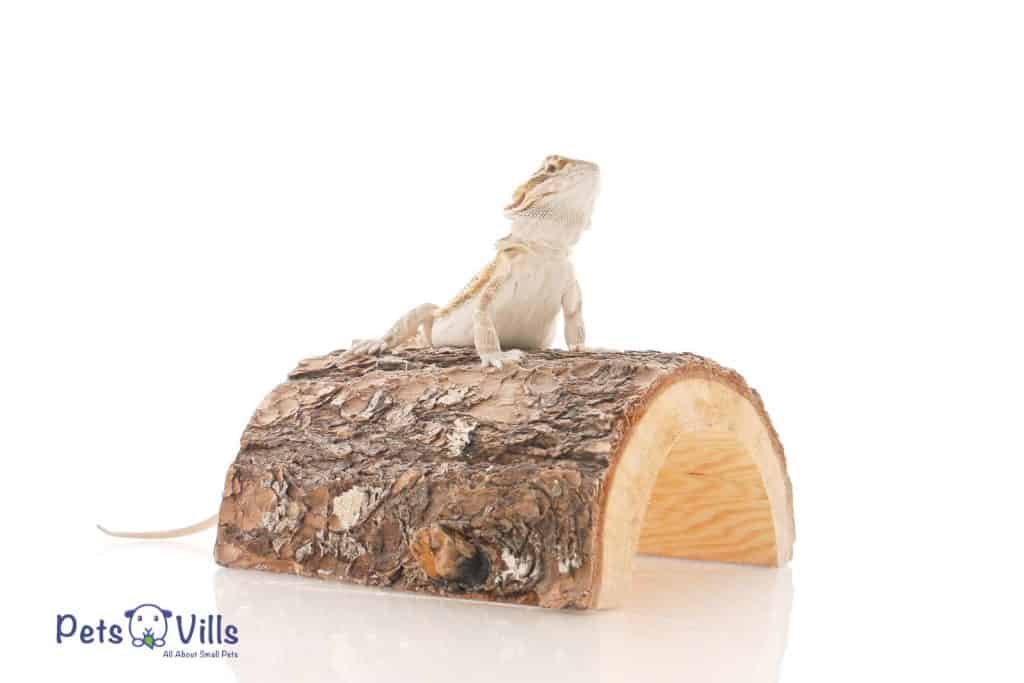
Sometimes normal beardie will also hatch an odd baby bearded lizard. When breeders can replicate the animal’s appearance through selective breeding, that’s called a genetic morph (genetic-linked trait).
It’s no surprise that fancy beardies are rare and expensive compared to the common bearded lizards. Selective breeding takes time, patience, and resources.
Moreover, to create these unique varieties, some breeders use linebreeding (breeding siblings or parents/offsprings), which results in deformities and genetic problems.
Also Read: Are Red Bearded Dragons Rare?
And speaking of health, how healthy are fancy bearded dragons? Let’s find out!
Are Fancy Bearded Dragons Healthy?
Fancy lizards are healthy if you get them from a reputable breeder that checks for common beardie health problems, such as metabolic bone disease. (1)
However, some fancy dragons are more likely to have health problems.
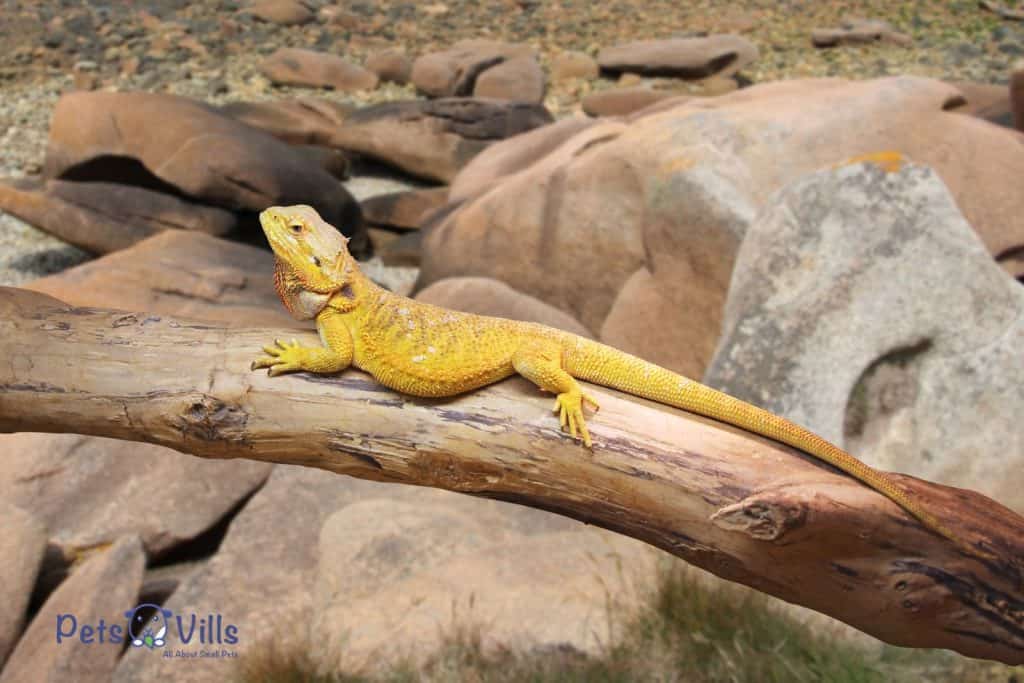
For example, silk back lizards are prone to injuries, burns, and shedding issues because they lack scales. Some vets are also against breeding silk backs because males injure the female during the breeding.
And according to studies, lizards with fewer scales lose water quicker, so they may be prone to dehydration. (2)
How Much Do Fancy Beardies Cost?
Normal baby bearded dragons cost around $40-$80, while common bearded dragon morphs are $150-$300.
However, unique morphs, such as paradox and zero, can cost between $800 – $1200. The rarer the color and the morph, the more expensive the animal will be.
And now, let’s see what types of bearded dragon morphs exist.
Types of Fancy Bearded Dragons
As I already said, breeders use the word “fancy” to describe bearded lizards with bright colors, smooth skin, and fewer/no spikes.
It’s not a type of standard morph, so fancy beardies can look like an entirely new species, which makes it hard to categorize them.
But when I was researching what fancy dragon would be the best for me, most reptile experts I talked to divided fancy dragons into four categories.
#1 Level of Scalation
Normal beardie dragons have scales all over their bodies, but fancy morphs may have no scales, smaller or larger scales, or different scale types.
Leatherback Bearded Dragon
These bearded lizards are one of the easiest to recognize – they lack the typical spikes along the back, resulting in smoother skin. Leatherback morphs may require special care due to their sensitive skin.
Dunner Bearded Dragon
The dunner morph is one of my favorites because it results in beardies with more scales – scattered and uneven. The spikes point in different directions, making for a striking appearance.
Silk back Beardie
A silk-back dragon has little to no scales and translucent skin. They’re fascinating, but they need special care. And silk back beardies will never last long in the desert due to their lack of spiky scales.
#2 Skin Translucence
Some fancy beardie lizards have lower skin melanin content, resulting in paler colors and patternless and white nails. The two main morphs are hypomelanistic (reduced black pigmentation) and translucent.
-Translucent Beardie
Unlike normal dragons, translucent beardies have see-through scales and dark/black eyes.
@v.redfox Man’s never seen a translucent bearded dragon before #translucentbeardie #beardeddragon #giggle #lgbtqia #trans ♬ original sound – reed
-Witblits Beardie
The Witblits has a body with a solid color and no patterns. They’re usually brown/sandy.
@roten.exotics.beardies My beautiful witblits boy, titus. He’s the king around here! #beardeddragon #beardeddragons #beardies #trans #translucent #exotic #pogona #oops #myheartwentoops ♬ original sound – Courtney Roten
-Zero Beardie
These bearded reptiles are similar to the Witblits. They’re white with standard scales.
@highimarlene galio, the gorgeous zero beardie #beardeddragon #beardeddragonsoftiktok #reptilesoftiktok #fyp #fypシ #hornworm #zerobeardeddragon #galio #lizard ♬ original sound – arlene
-Wero Beardie
These cute pet fancy reptiles combine Zero and Witblits traits, resulting in lizards with white bodies and small color patterns.
-Silverback
Silverbacks are patternless bearded dragons, usually brownish, beige, or off-white.
@richindie Pedro you silky beauty you #Sheddingskin #lizardskin #BeardedDragon #ASMR #Peelingskin#SilkbackBeardy #Shedding #Reptile #BeardedDragonShedding #Orangelizard #Locust #beardeddragoneating ♬ original sound – RichIndie
#3 Size
Most bearded dragons are the same size. The only exception is the German Giant, reaching up to 30 inches in length. It’s one of the giant pet bearded lizards.
#4 Color/Patterns
As I already mentioned, the common beardie is usually tan or brown. Fancy bearded dragons can be red, orange, tangerine, gold, sandfire gold, albino, blue, violet, purple, etc.
Moreover, unlike standard beardies, fancy ones can have stripes, zig-zag markings, and unique scale patterns, for example, Genetic stripe, Paradox, and Tiger stripe bearded lizards.
Watch this video to see what these unique fancy dragons look like!
And now, let’s see the difference between fancy and regular bearded dragons in detail.
Fancy Bearded Dragons Vs. Common Beardies
Regular and fancy bearded lizards share many similarities, so it’s easy to get confused, especially if you’ve never looked after a beardie.
And you can’t always trust pet shops that promote their bearded lizards as fancy. So, how to tell them apart? You’ll see how easy it is in a minute!
Or check this comparison table!
| Regular Bearded Dragon | Fancy Bearded Dragon | |
| Size | 18-22 inches | 18-22 inches (except German Giant) |
| Diet | Insects, vegetables, fruits | Insects, vegetables, fruits |
| Lifespan | 12-14 years | 12-14 years |
| Temperament | Good pets | Good pets |
| Colors | Tan/Brown | Vibrant colors – red, orange, blue, albino, yellow, etc. |
| Spikes | Spikes along the back | Few or no spikes at all/translucent skin |
| Patterns | Sandy hue marking | Bright markings, different patterns (zig-zag, spots, stripes) |
Fancy Bearded Dragons and Common Beardies: Similarities
Before I get to how you can tell a fancy bearded dragon from a common one, let’s see what traits they share.
-Size
In general, fancy and regular beardies grow up to 18-22 inches from the nose to the end of the tail.
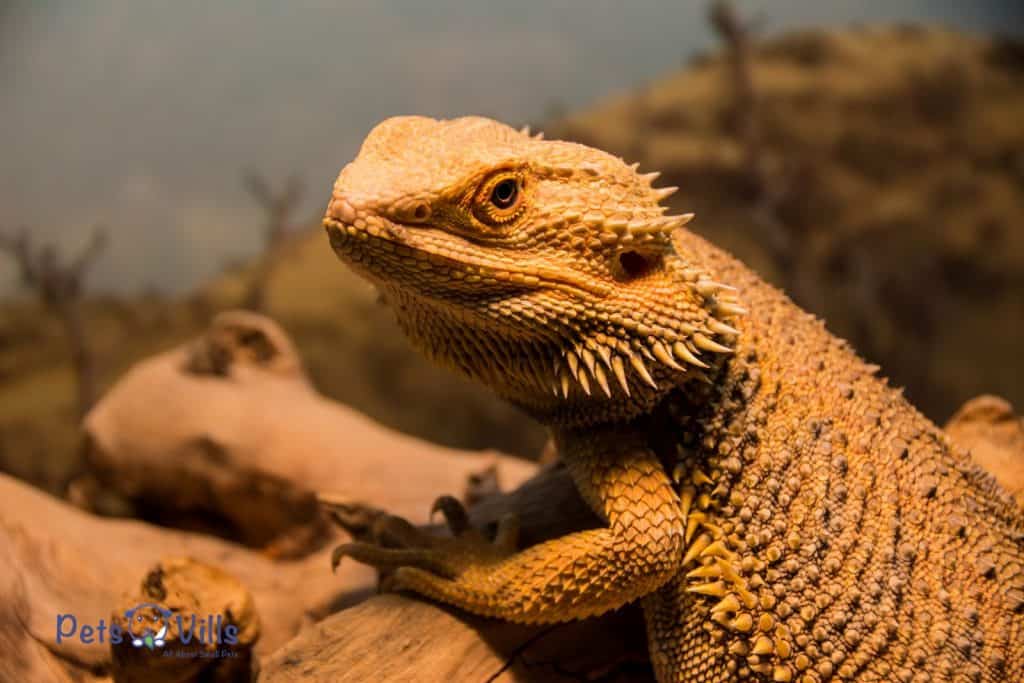
The exception is the German Giant, which can reach up to 30 inches in length.
-Diet
Fancy and regular beardies are omnivores, meaning they thrive best on a diet mix of insects, leafy greens, and fruits.
-Lifespan
Bearded lizards can live up to 12-14 years, as long as you provide the proper enclosure, a suitable bearded dragon diet, and plenty of heat.
-Temperament
As reptile experts from VCA explain, “Bearded dragons can make great pets if cared for properly.”
Fancy dragons are as friendly as regular adult bearded lizards, so they’re good pets, even for novice owners. (3)
Common Bearded Dragons vs. Fancy Bearded Dragon: The Differences
Regular and fancy lizards differ in appearance – colors, spikes, and patterns. It’s easy to tell them apart as long as you pay attention to these three differences.
Colors
As I said in the beginning, regular beardies are tan or brown with dusty hues to blend in the desert and avoid predators.
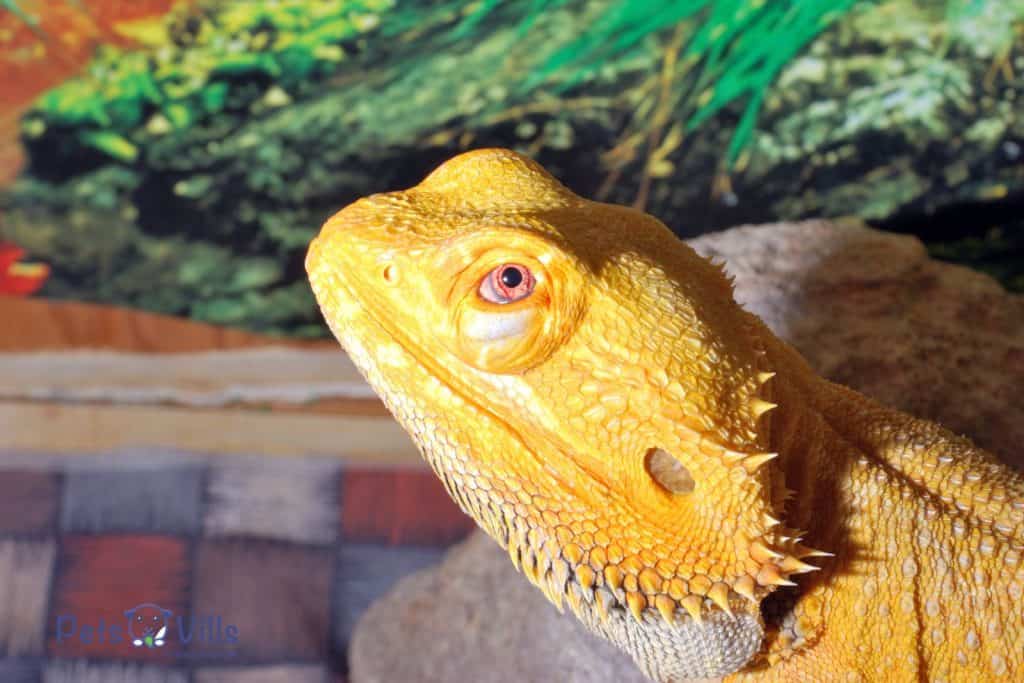
Fancy dragons have vivid colors, such as ruby-red, blue, purple, yellow, orange, etc. They also have distinctive markings.
Spikes
Fancy lizards have fewer spikes than normal beardies. Some morphs have smoother skin texture, translucent skin, or no scales.
Patterns
To distinguish a fancy from a normal beardie, look at their patterns. Fancy bearded lizards have bright stripes (yellow, red, orange, black, etc.), while regular dragons have sandy hues.
Moreover, fancy lizard markings come in zig-zag patterns, figure-eights, spots, and stripes.
And now, let’s talk about how to care for your fancy bearded lizard.
Caring For Fancy Bearded Dragons
During my years of caring for bearded dragons, I learned that the most important thing is to provide the right tank size and maintain proper temperature/humidity.
Tank
According to vets from PetMD, “A 75-gallon terrarium is the minimum size for an adult beardie.” I prefer larger enclosures for mine so that it has enough space to explore and bask. (4)
However, I’ve spoken to other owners who use a 55-gallon tank, and their lizards are happy and thriving.
Lightnight/Humidity
It would help if you had high ultraviolet lightbulbs to maintain 75-85°F during the day and 70-75°F at night. Humidity should be between 30% to 40%.
However, silk back dragons are more sensitive to light and heat, so a low-level UVB works better. And they can dehydrate quickly, so they need higher humidity levels (around 50%).
Substrate
Choose a smooth substrate if you’re raising silk back bearded dragon. Otherwise, you can use the usual substrates, such as:
- Ceramic tiles
- Reptile carpet
- Paper towels
Avoid sand, bark ships, and wood shavings. They can cause impaction if your fancy bearded lizard eats them by accident.
Feeding
Baby bearded dragons need a balanced diet of animal protein (around 75%-80%) and a little bit of plant protein (25%-20%).
Adult bearded dragons are the opposite – they should eat more vegetables/fruits than insects.
Safe vegetables and fruits include collard greens, mustard greens, turnip green, endive, apples, peaches, and apricots.
Check this bearded dragon feeding video for more information on what not to feed your pet lizard.
Also, don’t forget about calcium and vitamin D3 supplements. You should sprinkle your beardie’s food with calcium 2-3 times a week to prevent calcium deficiency.
Bathing
Bathe your fancy bearded lizard at least 2-3 times a week. Many bearded lizards enjoy bath time, and it’s a great way to keep your pet hydrated and bond with it.
More frequent bathing is beneficial during shedding, especially if your lizard has problems shedding its skin. And it can also help with constipation.
Don’t forget to provide a water bowl in the enclosure for proper hydration. Not all bearded dragons drink from a bowl, but it should be available.
Where Can I Buy Fancy Bearded Dragons?
While some types of fancy bearded dragons are rare, plenty of pet stores offer these unique fancy lizards for sale.
You can also find many online stores that sell fancy bearded dragons or contact breeders through their websites. Reptile expos are also an excellent way to find a healthy fancy beardie!
Also Read: Top 4 World’s Biggest Bearded Dragon Species
FAQs
Are Fancy Bearded Dragons Friendly?
Fancy bearded lizards are friendly, easy to tame, and make excellent pets for people that love reptiles. They are not aggressive without a good reason.
Where Do Fancy Bearded Dragons Come From?
Fancy dragons are bred in captivity to reproduce specific traits, such as vibrant colors and striking patterns. Normal bearded dragons come from Australia.
How Big Will My Fancy Bearded Dragon Get?
Most fancy dragons reach up to 24 inches in length and weigh 380-500 grams. However, German Giants can be as big as 30 inches.
What Is the Rarest Bearded Dragon?
Paradox bearded lizards are one of the rarest. They have random patches of colors over their bodies. Black bearded lizards are also very rare.
Do Fancy Bearded Dragons Change Color?
Yes, beardies’ colors get darker in response to temperature or communicating with other bearded lizards.
Conclusion
Fancy bearded dragons differ from the standard wild-type beardies thanks to their vibrant colors, unique patterns, and scale texture. But they have similar care needs and make excellent pets.
When picking a fancy lizard, choose a reputable breeder and inspect the dragon for signs of injuries, illness, and missing toes. And don’t forget to stock up on insects and suitable vegetables/fruits!
What do you think about fancy bearded dragons? Have you ever cared for one? Please share your experience with us in the comment section.
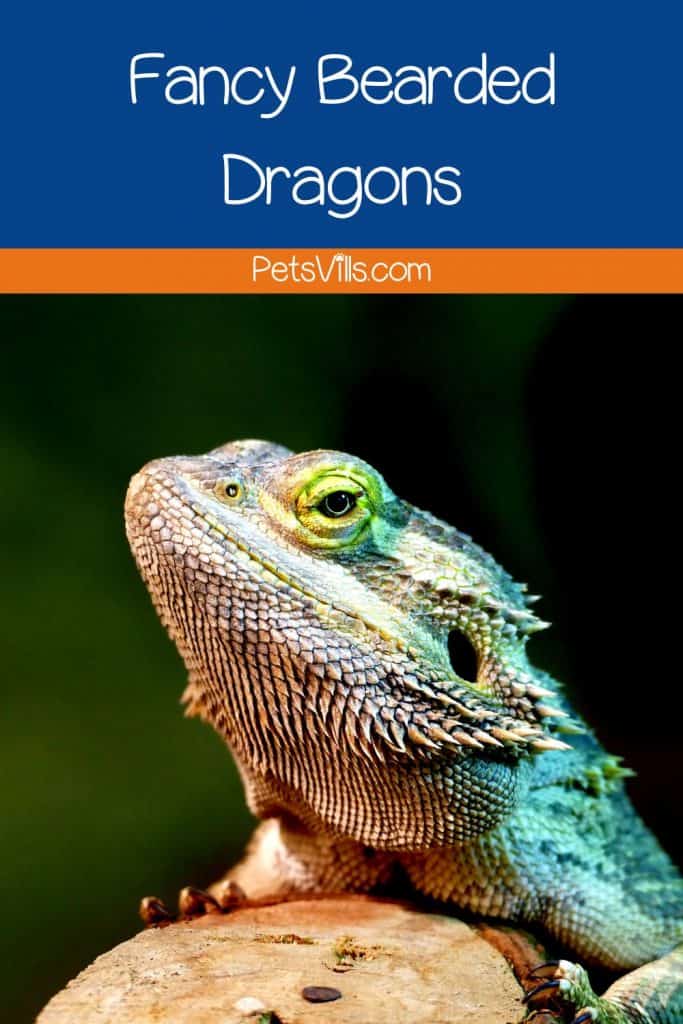
Resources:
- 1. Quigg M. MBD In Bearded Dragons | Animal Care Hospital. animalcarehospital.org. Published November 1, 2021. Accessed September 22, 2022. https://animalcarehospital.org/2021/11/1/marion-ia-mbd-in-bearded-dragons/
- 2. Sakich NB, Tattersall GJ. Bearded dragons (Pogona vitticeps) with reduced scalation lose water faster but do not have substantially different thermal preferences. Journal of Experimental Biology. 2021;224(12). doi:10.1242/jeb.234427
- 3. Bearded Dragons – Owning. vca_corporate. https://vcahospitals.com/know-your-pet/bearded-dragons-owning
- 4. Bearded Dragon Care 101. www.petmd.com. https://www.petmd.com/reptile/bearded-dragon-care-101
Grigorina grew up surrounded by animals – dogs, cats, cows, goats, sheep, and horses and that has shaped her into what I am today – a crazy cat lady who always has a place for one more cat (or a dog). She has two female cats – Kitty and Roni, and two tomcats – Blacky and Shaggy, but she also feeds her neighbors’ cats when they come for a visit. I just can’t say no to them. Follow her on FACEBOOK AND INSTAGRAM
Read her latest articles HERE
Learn more about her

